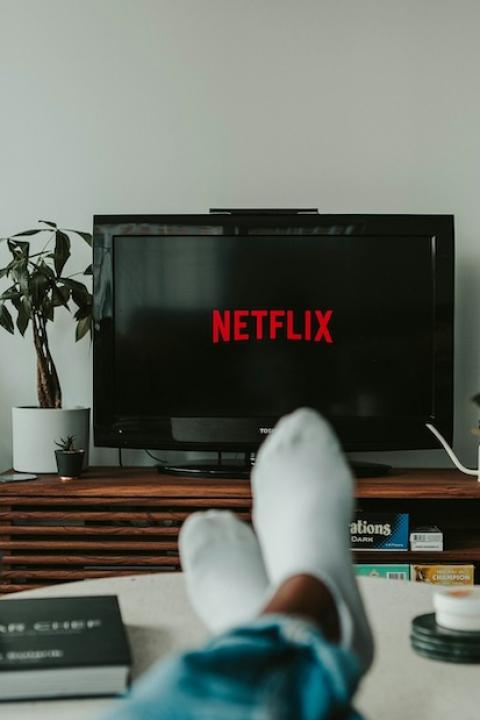
(Image: Mike Mozart/Flickr)
Dick’s Sporting Goods faced criticism and calls for a boycott from gun ownership activists when the company first began scaling back the sale of guns and ammunition in 2012. A dozen years later, the criticism continues, but Dick’s continues to respond to public concerns about gun violence — and expand into new and profitable lines of business instead.
Raising the bar against gun violence, and taking the heat
Dick’s Sporting Goods began removing assault-style rifles from its stores in 2012, after a 20-year-old murdered 26 children and adults at Sandy Hook Elementary School in Connecticut with the same type of firearm. Considering the company’s position as one of the top firearms retailers in the U.S., the decision was an attention-getter
Gun rights activists and gun safety advocates paid attention again in 2018 after Dick’s restricted gun sales to ages 21 and over. The company also removed some firearms and ammunition from hundreds of stores and destroyed its inventory of military-style, semi-automatic weapons after a 19-year-old student murdered 17 of his classmates at Parkland High School in Florida.
The decision to destroy the guns touched a raw nerve at the National Rifle Association. Dick’s “isn’t focusing on the actual problem, what it is doing is punishing law-abiding citizens,” the organization tweeted in April 2018, as reported by Fortune and other news organizations.
Among other actions since then, Dick’s removed all firearms and hunting equipment from one of its stores in Portland, Maine, in 2022. Its remaining three Maine stores also stopped selling firearms and hunting equipment between January and March of this year, following the murder of 18 people in Lewiston, Maine, by a U.S. Army reservist in October 2023.
Coincidentally or not, last week the National Center for Public Policy Research, right-wing organization, announced plans to criticize Dick’s gun policies at an upcoming shareholder meeting. The announcement cited a loss in shareholder value of $250 million due to former CEO Ed Stack’s “value-killing decision to halt gun sales,” calling it a “costly prioritization of progressive politics over profit.”
The organization also took aim at Stack personally, stating that the former CEO “thought his political beliefs about gun ownership gave him a license to treat the company like a personal plaything.”
But its announcement somewhat obscured the timeline and the facts.
When boycotts (don’t) work
Stack himself cited the $250 million figure in a 2019 interview with CBS This Morning, but he was not referring to lost shareholder value. His executive team calculated that the company would lose $250 million in sales after the gun restrictions in 2018.
In the same interview, Stack also expressed his personal feelings about discontinuing the sale of guns. That is different from treating the business as a “personal plaything.” As detailed in a Harvard Business School case study in 2022, Stack and his team meticulously weighed financial risks and benefits to the company before deciding to restrict gun sales after the Parkland massacre.
“Dick’s Sporting Goods did lose millions in sales in the months immediately following Stack’s announcement, but the chain’s revenues ultimately recovered through other sales in subsequent quarters,” wrote Jay Fitzgerald, the case study’s author.
Since then, Dick’s has continued to diversity its offerings, a practice it calls “omnichannel.” That includes emphasizing more ways for shoppers to buy, including in-store, curbside pickup and same-day delivery. In March of this year, the company announced that Q4 2023 delivered the largest sales quarter in its history.
“Our growth opportunities are significant, and we continue to prioritize investments in our future to fuel long-term omnichannel growth,” Stack, who moved from his CEO position in 2021 to take the title of executive chairman, said in a March statement.
Dick’s goes back to its roots
The current CEO of Dick’s, Lauren Hobart, also emphasizes the benefits of diversification. "With the continued success of our new store formats and our omnichannel experience, we will accelerate our investment in our growth strategies to drive our business forward and continue gaining market share in a fragmented $140-billion-dollar industry," she said in a statement.
Hobart was referring, in part, to the rollout of a new retail format called Dick’s House of Sport. First launched in 2021, the new venues feature turf fields, batting cages, and other indoor and outdoor elements focused on competitive sports. The company expects to have 20 such venues in operation before the end of the year, toward a total of 75 to 100 by 2027, along with other supporting programs like its new youth sports mobile app.
In 2021, Dick’s also introduced a specialty concept store in the Pittsburgh, Pennsylvania, area focused on promoting outdoor activities and encouraging public land conservation. The concept has since expanded to include locations in eight states, and last year Dick’s acquired the Walmart-affiliated Moosejaw outdoor apparel brand in support.
The emphasis on land conservation circles back around to the company’s roots as a single local store, Dick’s Bait and Tackle Shop. The shop was founded in 1948 by Ed Stack’s father, Dick, who is described as an avid fisherman.
By restricting gun sales and continuing to diversify into new retail and community formats, Dick’s is drawing on the lessons of recreational fishing — where discipline, community responsibility, and an appreciation of natural systems are all needed to sustain fish populations for everyone to enjoy. Meanwhile, the company is exposing itself less to the reputational risk of a customer buying a gun with murderous intent.
This exercise in community-building sets an example for other businesses to follow, and that is increasingly important at a time when a strong majority of the public is concerned about gun violence.
“Six in ten U.S. adults say gun violence is a very big problem in the country today, up 9 percentage points from spring 2022,” according to a 2023 survey by the Pew Research Center. An additional 23 percent of respondents said that gun violence is a “moderately big problem.” “Looking ahead, 62 percent of Americans say they expect the level of gun violence to increase over the next five years,” according to the research.
On the heels of last week’s U.S. Supreme Court decision striking down a short-lived federal ban on “bump stocks,” devices that can be attached to semi-automatic guns to enable more rapid firing, the expectation of ever-increasing gun violence could soon be realized in horrifying ways. Dick’s new business models can’t do anything about that, but all business leaders can help advocate for a restoration of common sense on gun safety.

Tina writes frequently for TriplePundit and other websites, with a focus on military, government and corporate sustainability, clean tech research and emerging energy technologies. She is a former Deputy Director of Public Affairs of the New York City Department of Environmental Protection, and author of books and articles on recycling and other conservation themes.











